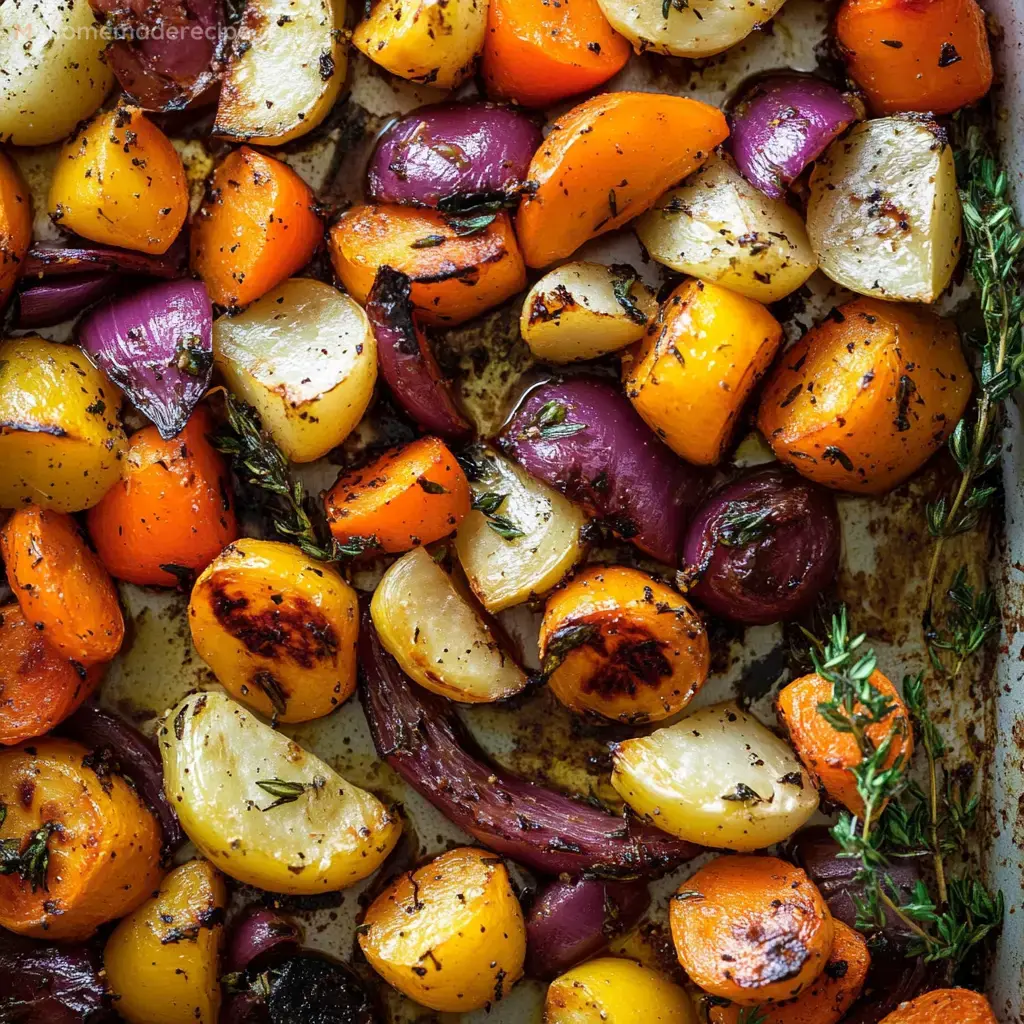Roasting vegetables is an art that, once mastered, can elevate any meal from ordinary to extraordinary. It's a technique that not only enhances the natural flavors of the vegetables but also adds a depth and richness that is hard to achieve through other cooking methods. As a mother and an avid cook, I can attest that knowing how to make roasted vegetables well is a life essential, especially when you're looking to incorporate more healthy and delicious meals into your family's diet.
Roasting vegetables is more than just tossing some veggies in the oven; it involves understanding the key principles that ensure each vegetable is cooked to perfection. Here are some of the benefits of roasting vegetables: it brings out their natural sweetness, adds a satisfying crunch on the outside while keeping the inside tender, and allows for a versatile range of seasonings and flavors. Whether you're a seasoned chef or a beginner in the kitchen, mastering the art of roasting vegetables will open up a world of culinary possibilities.
Separation of Vegetables
One of the most important principles in roasting vegetables is to separate them based on their texture and moisture content. Starchy and harder root vegetables like carrots, potatoes, and sweet potatoes should be roasted separately from high-moisture vegetables such as eggplant, zucchini, and bell peppers. This separation ensures that each type of vegetable cooks evenly and prevents sogginess or undercooking.
For instance, if you roast carrots and zucchini together, the zucchini will release a lot of moisture, which can make the carrots steam instead of roast, resulting in a less desirable texture. By roasting them separately, you can ensure that the carrots come out crispy on the outside and tender on the inside, while the zucchini retains its natural sweetness and a slight caramelization.
Cutting Vegetables
The way you cut your vegetables is crucial for achieving even roasting. It's advisable to cut them into roughly the same size and shape so that they roast in the same amount of time. While it might be tempting to cut them into small pieces to speed up the cooking process, larger pieces are generally better. Smaller pieces cook faster on the inside and may not have enough time to caramelize on the outside, which is a key aspect of roasting.
Remember that vegetables shrink about 25% during roasting, so cutting them larger helps them hold up better in the oven. For example, cutting carrots into 1-inch pieces or broccoli into 1 1/2- to 2-inch florets ensures they retain their shape and texture throughout the roasting process.
Onions
Onions are a special case when it comes to roasting. They take less time to roast compared to other vegetables, so it's best to prepare them separately. Start by tossing red onions with olive oil, salt, and pepper in a separate bowl. Set them aside to be added to the roasting tray about 30 minutes into the roasting time. This ensures that the onions are cooked to perfection without becoming too charred or burnt.
Other Vegetables
For the remaining vegetables, place them in a large bowl. Add smashed whole garlic cloves to prevent burning, as minced garlic can easily become too crispy and bitter. Include thyme sprigs and hand-torn sage for added flavor. Toss everything with olive oil, salt, and pepper until the vegetables are well-coated. This step is crucial as it helps in distributing the flavors evenly and prevents the vegetables from drying out during the roasting process.
Oven Temperature
The ideal temperature for roasting vegetables is often debated, but a moderate temperature of 200°C/390°F (or 180°C/350°F for a fan/convection oven) is generally recommended. This lower temperature allows the vegetables to sweeten and caramelise evenly over a longer period. High temperatures, such as 450°F, can lead to burning and a lack of even cooking, especially for harder vegetables like potatoes and carrots.
Roasting Time
To start the roasting process, preheat your oven to the recommended temperature. Line a large roasting tray with parchment paper, though this is not essential since the vegetables are tossed with sufficient oil to prevent sticking.
Spread the prepared vegetables on the roasting tray in a single layer, ensuring they do not overlap. This allows air to circulate around each vegetable, promoting even browning and crispiness. Roast the vegetables for 30 minutes, then add the red onion that was set aside earlier. Give everything a quick toss to redistribute the vegetables and ensure even cooking.
Continue roasting for another 60 minutes, with a toss halfway through. This results in a total roasting time of 1.5 hours, which may seem long but is necessary for achieving that perfect balance of color, texture, and flavor. The longer roasting time allows the vegetables to sweeten and develop a rich, caramelized exterior.
Cleanup
While cleanup might not be the most exciting part of cooking, it's worth noting that lining the tray with parchment paper can significantly reduce the effort involved. However, since the vegetables are well-coated with oil, sticking is minimal, and cleanup is relatively easy even without parchment paper.
Serving Suggestions
Once the vegetables are roasted to perfection, they can be served as is or with additional flavors. A drizzle of olive oil or a sprinkle of extra pepper can enhance their natural flavors. The longer roasting time makes the vegetables more delicious as they have time to sweeten and develop complex flavors.
You can also add other seasonings or ingredients towards the end of the roasting time. For example, sprinkling grated cheese over the vegetables and returning them to the oven for a few minutes can melt the cheese and add an extra layer of flavor.
Variations
- Herbs and Spices: Experiment with different herbs like rosemary, thyme, and sage, and spices like garlic powder, chili powder, or cumin. These can be added directly to the vegetables before roasting or mixed into the olive oil for a marinade.
- Citrus: Add thin slices of lemon or orange to the roasting pan for a burst of citrus flavor. You can also finish the vegetables with a squeeze of fresh lemon or orange juice.
- Cheese: As mentioned earlier, sprinkling grated cheese over the vegetables can add a rich and creamy element.
- Meat: For a heartier dish, you can roast vegetables with cured meats like bacon, pancetta, or chorizo. The fat from these meats can add a deep, savory flavor to the vegetables.
Summary of Key Points
- Separate Vegetables: Roast starchy and hardier root vegetables separately from high-moisture vegetables.
- Cutting: Cut vegetables into roughly the same size and shape to ensure even cooking.
- Preparation: Prepare vegetables with olive oil, salt, pepper, and herbs before roasting.
- Temperature: Roast at a moderate temperature of 200°C/390°F.
- Time: Roast for a total of 1.5 hours, with a toss halfway through.
- Cleanup: Line the tray with parchment paper for easy cleanup.
Encouragement to Experiment
The key to keeping roasted vegetables interesting and varied is to experiment with different combinations of vegetables and seasonings. Don't be afraid to try new herbs, spices, and even different types of oil like avocado oil for higher heat tolerance.
 Pin it
Pin it
